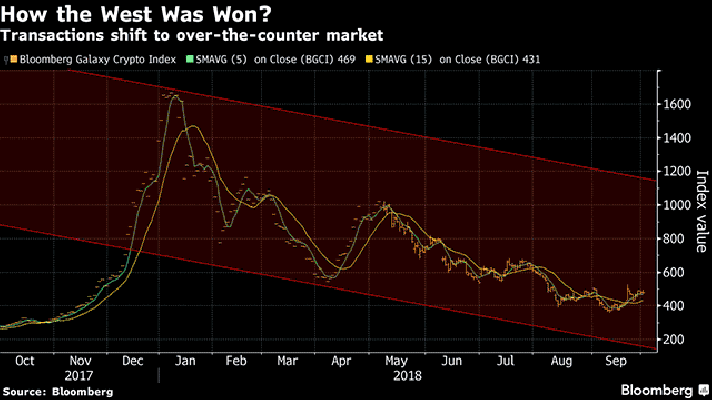Deploying a Multi-Node Hyperledger Fabric Network in 5 Steps
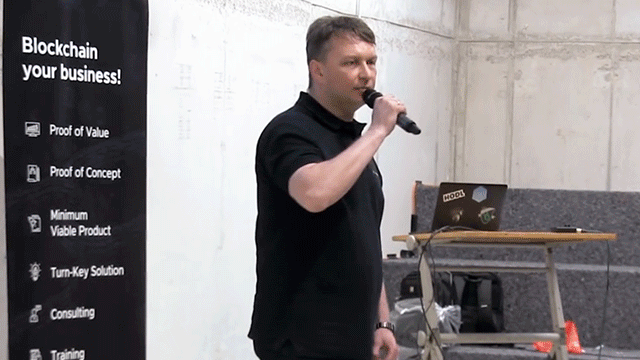
As blockchain networks become more sophisticated and heterogeneous, you will probably need more than one node in your deployment. At a Hyperledger meetup in Amsterdam, Vitaliy Chernov of Altoros provided attendees with a 5-step process for deploying a multi-node Hyperledger Fabric network. Vitaliy’s presentation involved an Orderer and three organizations, featuring a demonstration on invoking transactions.
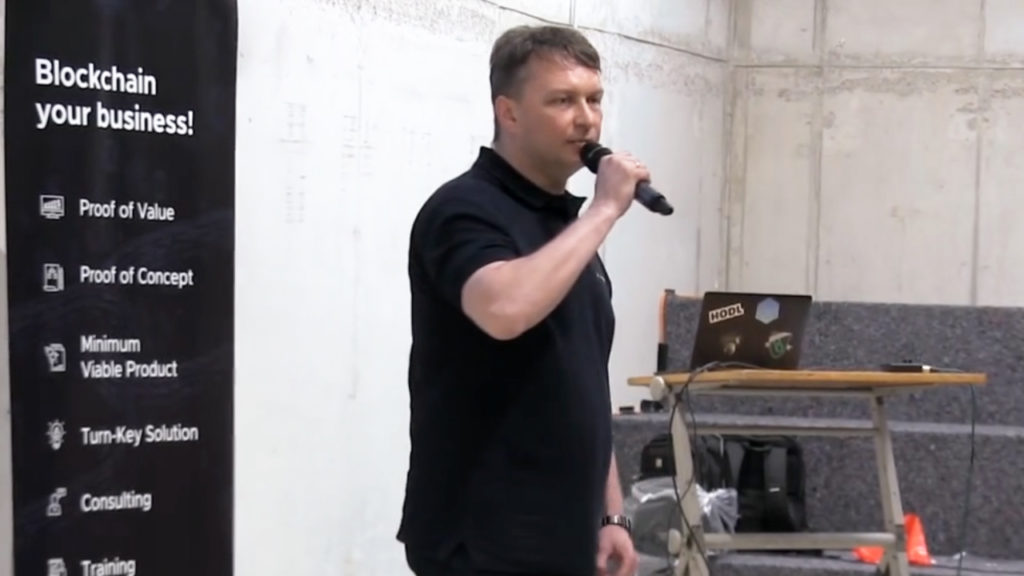 Vitaliy Chernov at the meetup in Amsterdam
Vitaliy Chernov at the meetup in Amsterdam
Prerequisites
Before getting started on deployment, anyone following Vitaliy’s guide will need four work stations or cloud instances with:
- Linux Ubuntu 16.04 (or Cent OS 7)
- Docker-CE (v17.12.1-ce) and Docker-Compose (v1.8.0)
In his presentation, Vitaliy set up his environment on Amazon Web Services (AWS). In case updates are needed, the following console commands can be run:
$ sudo apt-get update && sudo apt-get -y install docker-compose git jq $ sudo usermod -aG docker $USER $ exit
Once the prerequisites are met, simply follow the process step by step.
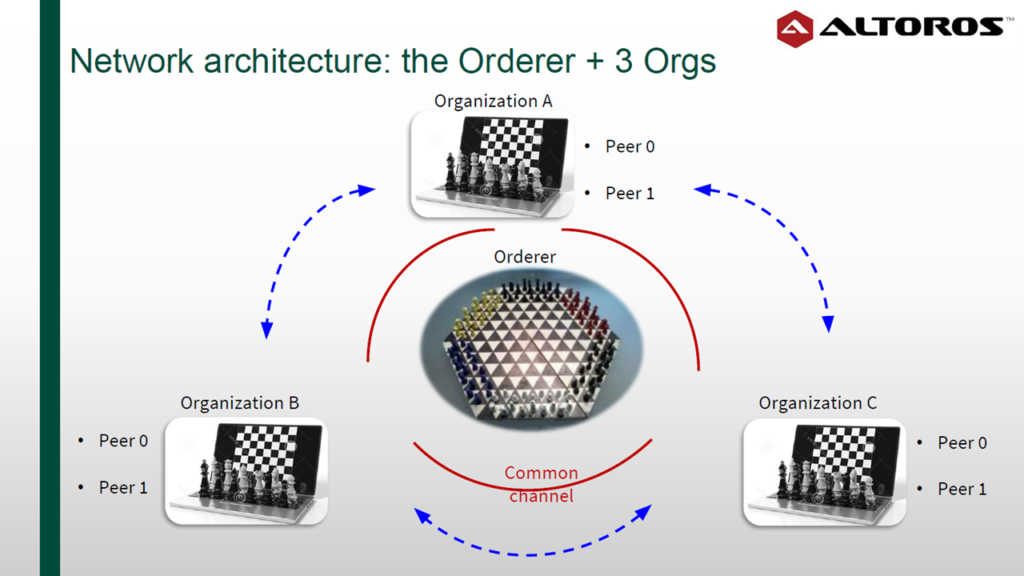 A network architecture with multiple nodes
A network architecture with multiple nodes
Step 1: Get Fabric Starter
First, get Fabric Starter from GitHub.
$ git clone https://github.com/Altoros/fabric-starter.git $ cd fabric-starter
This tool—created by Altoros—will help you to get started with Hyperledger Fabric.
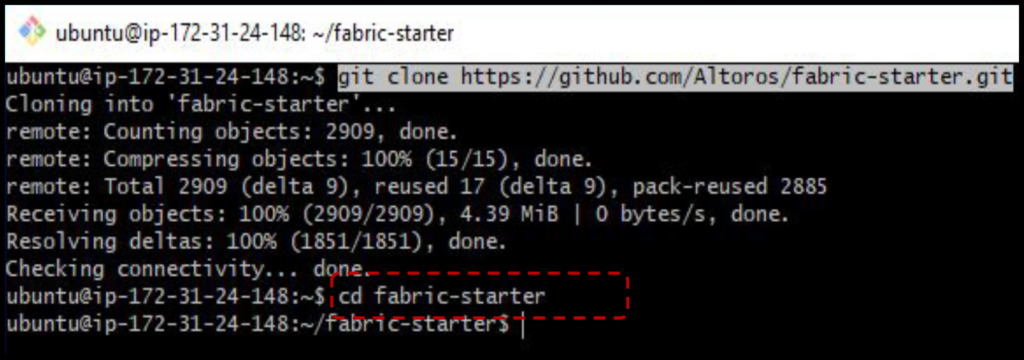 Run the commands on all four nodes
Run the commands on all four nodes
Step 2: Network configuration—mapping nodes
Map the domain names of the nodes to real IP addresses.
$ export IP_ORDERER=18.222.125.243 IP1=18.191.152.58 IP2=18.222.145.192 IP3=18.191.209.53
 Run the command on all four nodes
Run the command on all four nodesOnce a node is mapped, it becomes publicly accessible.
 Node details can be checked on AWS
Node details can be checked on AWS
Step 3: Generating certificates
Generate the certificates of the organizations on their nodes. Enter the following line on organization A’s host:
$ ./network.sh -m generate-peer –o a
Enter this line on organization B’s host:
$ ./network.sh -m generate-peer –o b
And this line on organization C’s host:
$ ./network.sh -m generate-peer –o c
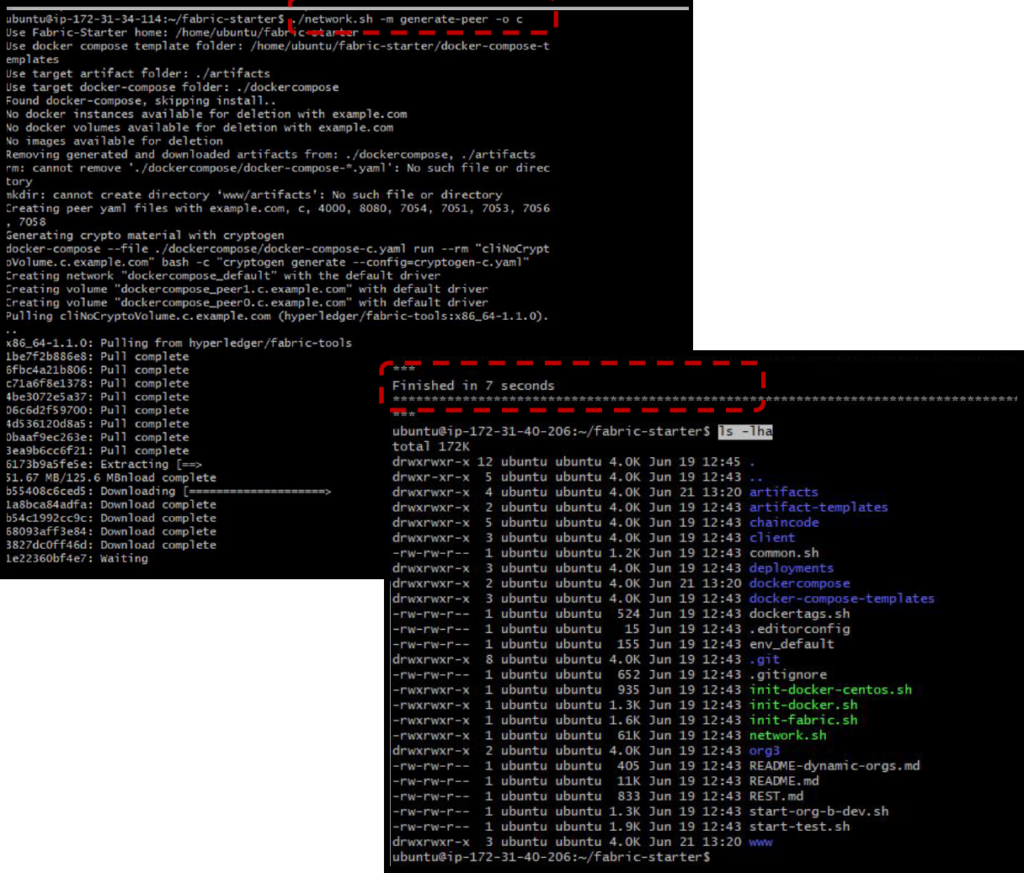 Generating a certificate takes 7 seconds
Generating a certificate takes 7 secondsOnce a certificate is generated, it can be viewed using the following console command:
$ ls -lha
Step 4: Generating the Orderer
Use this code to generate the Orderer:
$ ./network.sh -m generate-orderer
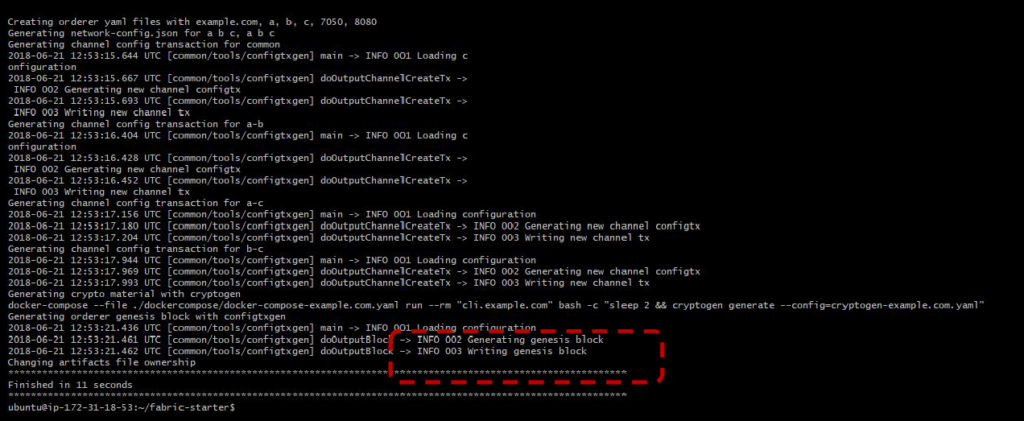 The Orderer generates and writes a genesis block
The Orderer generates and writes a genesis blockStart the Orderer:
 A genesis block combines the certificates of all the organizations
A genesis block combines the certificates of all the organizations
Step 5: Connecting orgs and peers
Finally, connect the organizations to their peers. Run the following line on organization A’s host:
$ ./network.sh -m up-1
This line is for organization B’s host:
$ ./network.sh -m up-2
And this line for organization C’s host:
$ ./network.sh -m up-3
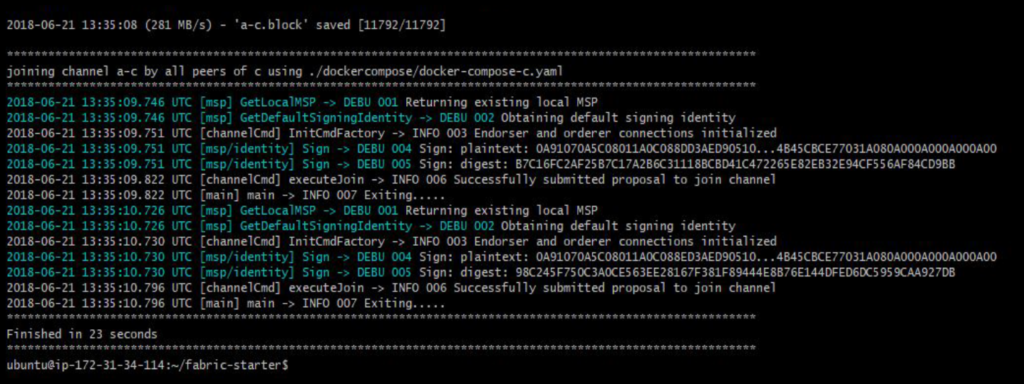 The organizations are now connected on the network
The organizations are now connected on the network
Launch the Fabric API
Once the five steps are accomplished, the Hyperledger Fabric network is now ready to be tested and used. Each organization’s node can be accessed by entering its IP address on a web browser. The port 4000 should be opened. After that, go to the admin section.
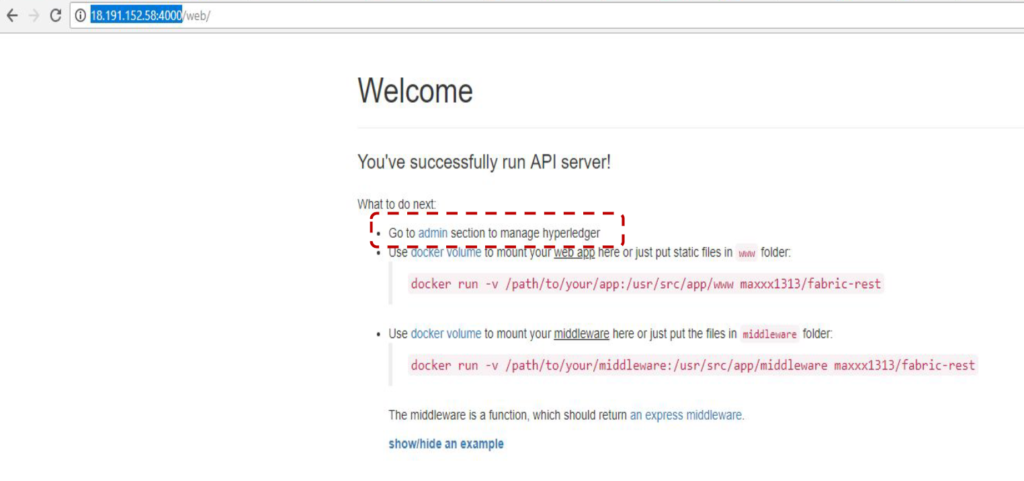 Connecting to organization A
Connecting to organization AUsing this process, one can easily deploy a multi-node blockchain network. More importantly, we hope it helps with providing valuable hands-on experience using blockchain. If you want to learn more about Fabric Starter, download this cheat sheet.
Want details? Watch the video!
Related slides
Further reading
- Hyperledger Fabric v1.2: What’s New and the Roadmap for 2018
- Brian Behlendorf of Hyperledger: Do POCs, Billions Are Already on Blockchain




